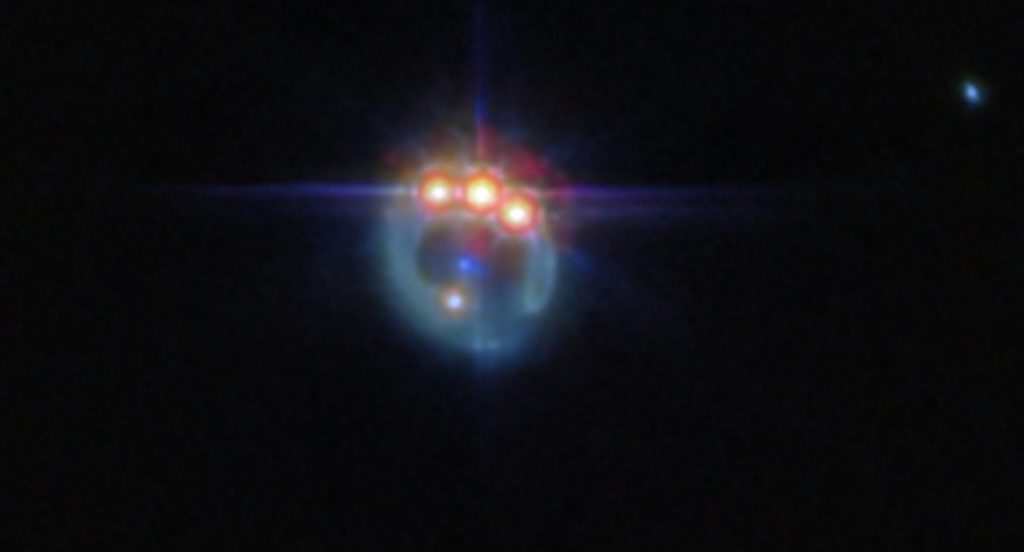An intriguing new image captured by the James Webb Space Telescope shows a bright quasar in space.
Quasars are the blazing centers of active galaxies, powered by supermassive black holes that feed on vast amounts of gas.
Thanks to gravitational lensing, astronomers were able to observe a quasar known as RX J1131-1231.
One effect of gravitational lensing is that it can magnify distant celestial objects, allowing astronomers to study objects that would otherwise be too faint or too far away.
Located in the constellation Crater, about 6 billion light-years from Earth, RX J1131-1231 is thought to be one of the best lensed quasars ever discovered, with the foreground galaxy smearing the image of the background quasar with a bright arc, creating four separate images of the object.
The composite image was selected as the Webb Telescope’s Photo of the Month and was described by the European Space Agency (ESA) as a “jeweled ring.”
NASA released the image with the headline “Diamond of the Season,” explaining that these sparkling “gems” are actually four photos of the same thing: an extremely bright quasar.
Diamond of the Season
These sparkly “gems” – glowing orange dots – are actually four images of the same thing: extremely bright celestial objects called quasars. https://t.co/sELuB7cHjB
So how did Webb get his hands on multiple copies? ⬇️ pic.twitter.com/dGgbTJdf9W
— NASA Webb Telescope (@NASAWebb) July 5, 2024
according to Statement from ESAGravitational lensing, first predicted by Einstein, offers a rare opportunity to study the regions close to the black holes of distant quasars by acting as a natural telescope, magnifying the light from these sources.
“All matter in the universe distorts the space around it, and the more massive it is, the greater the effect. Light passing around a very massive object, such as a galaxy, travels through this distorted space and appears to be bent visibly from its original path.”
The image was taken by Webb’s MIRI (Mid-Infrared Observatory) as part of an observational program to study dark matter, the invisible material that makes up most of the mass in the universe.
Look up at the sky in late July! Two meteor showers will peak in the same sky on the same night this month
Webb’s quasar observations have allowed astronomers to probe the nature of dark matter on smaller scales than ever before.
Share this gem with fellow astronomy enthusiasts on social media…


